Adam Liaw's ultimate guide to summer barbecues
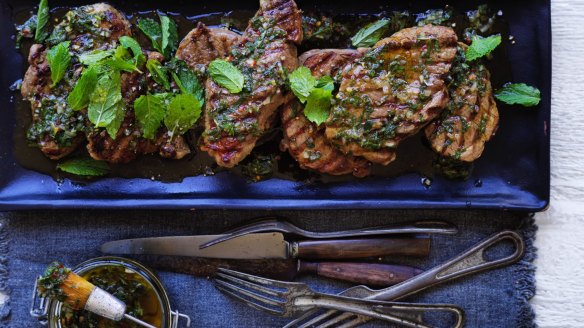
As the weather warms up and restrictions relax, outdoor cooking and eating is a delicious option, and not just because it's COVID-safe. It's time to get your barbecue on, so here's my guide to getting it right.
Choose a BBQ
First things first. When choosing a barbecue, your main decisions are between gas and charcoal, and hooded or non-hooded. Each has its pros and cons, and what you go with will largely depend on how you plan to cook.
Gas is more convenient, but charcoal has far superior flavour. If you're a snags, steak and chops kind of person you can get away an open barbecue, but if you want the versatility of roasting (or making pizzas) you'll want a hood.
As a person who is fundamentally unable to make even the most basic of life decisions, I hedge my bets with a gas barbecue for my ordinary weeknight steak, and break out the charcoal barbecue or smaller konro (sometimes called a hibachi, though that isn't strictly the correct term in Japanese) for bigger occasions when it's worth getting the coals going.
One tip for going the gas route: If I'm cooking on gas I'll throw a piece of wood on the open grill – just on top where the food goes – and let that burn. If you've got the hood down it will add a little of that wood smokiness to your food, but even if you don't have a hood the smell of the wood smoke in the air adds something to the whole experience.
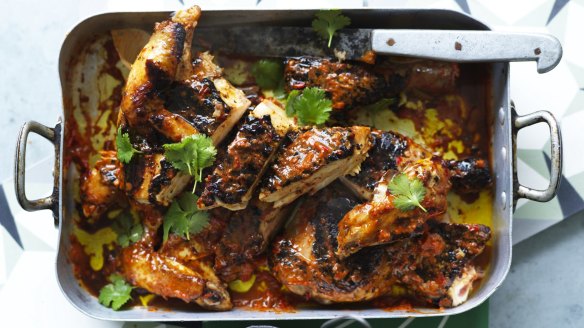
Set up your station
If you look next to your kitchen cooktop you'll probably see a bunch of things you need for cooking – some salt and pepper, oil, maybe some wine. Good barbecuing needs many of the same things. Put a tray of barbecue essentials within arm's reach – that same salt and pepper, olive oil, a small bowl of butter and a basting brush, perhaps some lemon wedges and even some fresh herbs that can be thrown right onto the grill.
I include a cutting board and knife in that list of essentials, too. It makes a big difference being able to cook more than just individual serves of meat. Whole butterflied chickens, lamb legs and shoulders, or big flank steaks are all great on a barbecue, and having a cutting board nearby means you can slice them so everyone can have a piece.
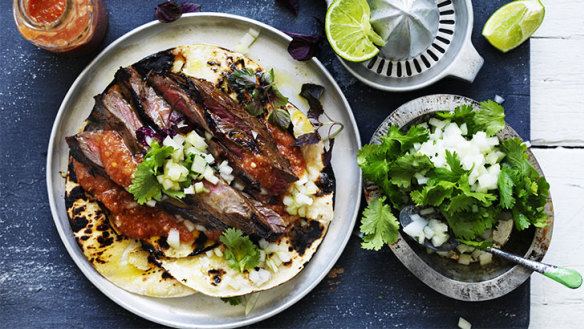
Branch out on sides
In Australia we might think a barbecue goes with a loaf of bread, tomato sauce and a green salad – and it does – but throwing a bit of meat on a flame is a welcome event the world over. If you're wanting a bit of variety in your barbecue offering, the sides are where you need to put your focus.
Make some salsa, grill some corn and throw some tortillas onto the hotplate and your barbecue will take an easy Mexican-ish twist.
Match it instead with a papaya salad, sticky rice and a spicy jaew (chilli sauce) and even an ordinary snag can be a feast of Thai or Laotian flavours.
Add coleslaw, pickles and a homemade hot barbecue sauce instead and your pork chops will take a trip through the American south, or go for nuoc cham, rice noodles and piles of herbs for some Vietnamese influence.
One of my favourite spins on a backyard barbecue is to add a spicy ssamjang, kimchi, lettuce leaves and other side dishes. Grill some pork belly, prawns, squid or sliced beef and you've got yourself KBBQ at home.
Don't forget the veg
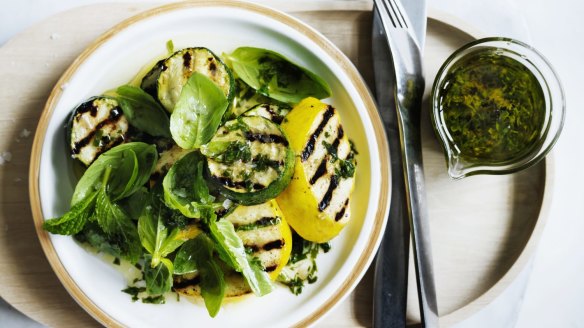
Barbecues aren't just meat and salad. Leave some space on the hotplate for the vegetables, too.
Onions are a favourite for many (keep the heat low, add oil and cook them for longer than you think you should) but please don't stop there.
I love giant portobello mushrooms with butter, herbs and garlic, pumpkin, corn, eggplant, tomatoes or even cos lettuce.
But my favourite vegetable on the grill might be broccolini. Grill for a few minutes until it's blackened, hen finish with salt, butter and squeeze of lemon.
Get a pan on it
Don't forget that a barbecue is an open flame and be used just like a stove. Putting a saucepan or frying pan on your barbecue can really increase your options.
Keep sauces warm, braise onions, dip grilled chicken in a simmering teriyaki sauce, or melt butter for drizzling over scallops or whole fish – anything that needs a bit of liquid might struggle on a flat barbecue, but will be fine in a pot. Just keep the handle away from the heat so you don't burn your fingers.
Rest. Please, rest
The number one rule of cooking meat is resting, so it's ironic that it's also the rule most frequently broken at barbecues – our meatiest occasion. We often serve straight from the barbecue onto the plate, but that's not the best way to do it.
Set up a couple of specific trays or serving plates for holding meat after it's come off the grill. Take the meat off and rest it like you would normally (the rule of thumb is to rest for half the amount of time the meat took to cook).
Many people don't do this when barbecuing because in the outdoors the breeze can make the meat go cold faster, but my trick is to rest the meat and then return it to the barbecue for a few seconds after it's rested. It will bring the sear back and warm the outside of the meat so you can serve it fresh from the grill and rested. The hardest part is keeping hungry hands from stealing it while it's resting.
Ditch the disposables
For those who want their outdoor eating to be a little greener, avoid the plastic plates. There are more sustainable options made from recycled paper or bamboo, or you can do what I do and get a dozen or so enamelled metal plates that can withstand a bit of outdoor punishment, and reuse them again and again. They'll last you a lifetime, and you'll never have to worry about disposable plates again.
Cleaning
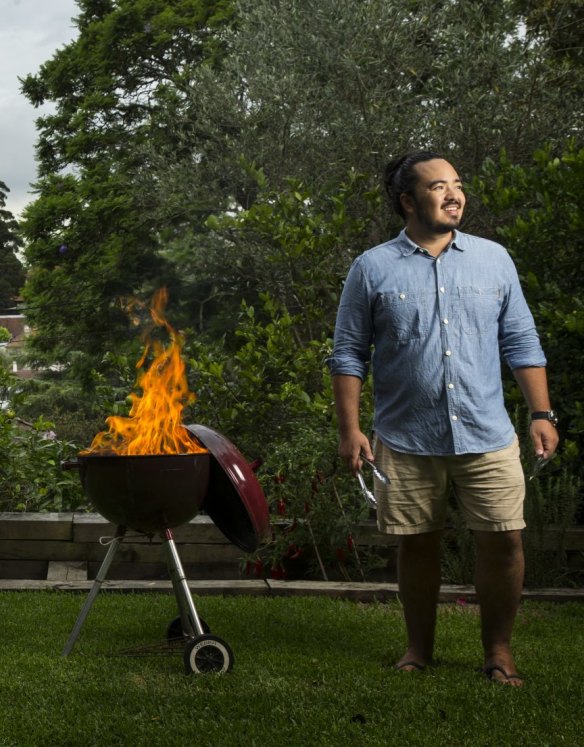
One of the best things about barbecues is that they don't take much cleaning. Barbecues thrive on neglect. Just like a well-worn wok, too much cleaning will remove the seasoning that develops on metal over time.
Seasoning is the term given to the layers of polymerised oil that coat a metal surface, protecting it from corrosion and making the surface non-stick. These layers are created by burning oil onto the metal and they build up over time, so after the cooking is done, just keep the heat running for 10 minutes or so until any residue burns to black, then brush it off with a wire brush.
Appears in these collections
The best recipes from Australia's leading chefs straight to your inbox.
Sign up- More:
- How to
